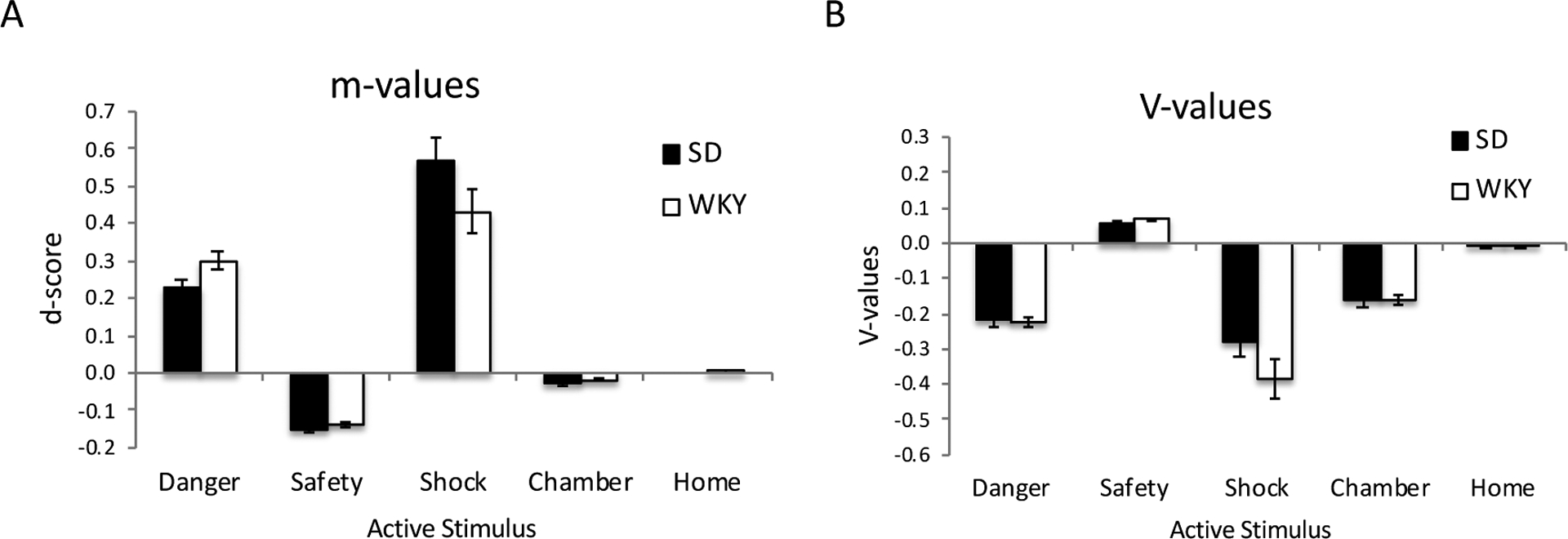Figure 6.

(A) Mean weights in the actor module (“m-values”) at the end of acquisition session 12, shown as a d-score (weight from each stimulus to “press” response minus the weight from that stimulus to “other” responses). The d-scores were positive for danger and shock signals, indicating a bias for the actor to select “press” when danger or shock is present; negative for safety, indicating a bias to select “other” when safety is present; and near zero for the contextual stimuli. (B) Mean weights in the critic module (“V-values”) at the end of acquisition session 12. As expected, weights were strongly negative for the danger signal, the shock, and the experimental chamber context (where danger and shock were experienced), positive for the safety signal, and near zero for the home cage (where danger, safety, and shock were never experienced). Y-axes are in arbitrary units; errors bars indicate ±1 SEM.
